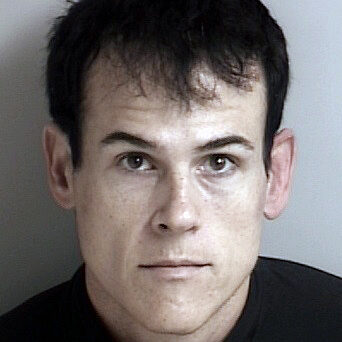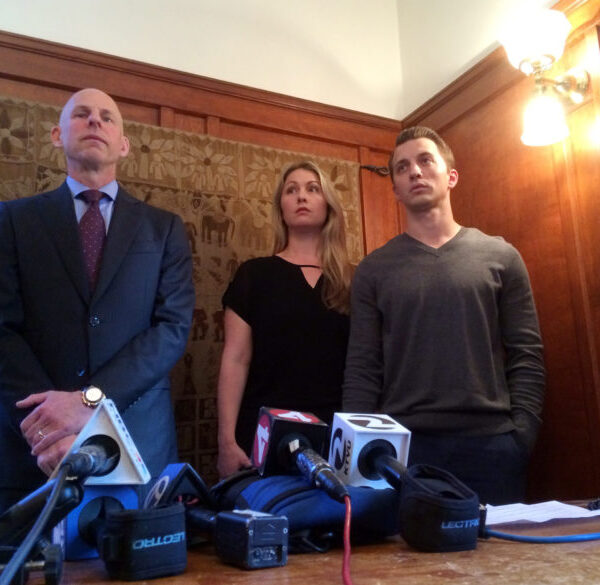EDITOR’S NOTE: This is one of two posts about a complex tale of crime, assumptions and mental health published by The Atavist. Today we talk with writer Katia Savchuk about how she found and reported the story. Tomorrow, Atavist editor Seyward Darby answers questions about the kinds of stories she looks for, and annotates Savchuk’s story pitch.
These days, the world we navigate can feel surreal: a warming climate, fractured political institutions and judicial courts that seem intent on turning back time. The present moment can seem to more closely track with a movie script rather than precedented U.S. history.
The same can be said for “A Crime Beyond Belief,” a nearly 20,000-word feature by Katia Savchuk for The Atavist. This true crime story, which revisits a San Francisco Bay area kidnapping case, has all the trappings of gripping narrative: detectives, kidnappings, complex characters, and blurred lines between reality and delusion. The story follows a series of bizarre home invasions in the San Francisco Bay Area that culminate in a kidnapping — a crime that local police initially dismissed as a fabricated “hoax,” labeling the kidnap victim a real-life “Gone Girl.” But detectives traced the crimes to Matthew Muller, a Harvard-trained lawyer and former Marine who struggled with mental illnesses, including psychosis. Perhaps most notably, the story is an exploration of Muller’s mind; it peels back the layers of his life, probes at inflection points and examines how he ended up where he did.

Savchuk, an independent journalist based in the Bay Area who was born in Ukraine, was working on this story for nearly four years before it was published. It’s a feat of deep and tenacious reportage, presented through deft narrative writing that engrosses readers at each turn.
(Disclosure: My fascination with this story stems back to 2020 and early 2021, when I assisted Savchuk with research by helping her obtain records, organize legal materials and synthesize case information into research memos. I was not involved in any of the writing or editing.)
Savchuk has spent her career searching for information across forms and functions. She caught the journalism bug early, editing her high school paper, but pursued other paths early in her career. After graduating from Harvard University with a degree in social studies, she documented research and produced academic papers for a non-profit in India before working as a private investigator.
Her early jobs always involved ferreting out information and verifying facts — but not weaving them into the kinds of stories she wanted to tell. “It would involve these great stories, but then they would end up in a filing cabinet,” she told me.
So she found her way back to journalism, graduating from Columbia Journalism School in 2013. She worked as a staff reporter for Forbes before becoming a full-time freelancer in 2017, and has written for publications including the New Yorker, Pacific Standard and The Guardian.
Tomorrow, Storyboard will feature an interview and pitch annotation with Seyward Darby, editor-in-chief of The Atavist who commissioned and edited Savchuk’s story.
I spoke with Savchuk about the motivations of her subjects, navigating source reliability and writing responsibly about mental health. Our conversation has been edited for length and clarity.
***
How did you find this story?
I read about it in the news back in 2015, but I was working at Forbes at the time and it wasn’t their coverage area, so I just kind of took note. Then I went freelance in 2017. Not too long after that, I read about the settlement that Denise and Aaron — the victims in the case — had signed with the city of Vallejo, which put it back on my radar. I thought, ‘Someone must be writing this already. There must be a magazine story in the works about this.’ But I looked and looked, and didn’t find anything. It goes to show that it never hurts to try, even if you assume a story has been done already.
At that stage, I imagine you didn’t know what shape the story would take or what was really there. There are many different threads of this narrative and, as you note, some elements made local news. What made you feel there was more to explore? How do you think about the threshold of components you need to pursue a story, particularly one of this scope?
It was pretty evident from the start that there was more to this than a news story could capture. There were just so many twists and turns and unanswered questions. Police had accused a couple of staging a hoax, and clearly it was not. Calling her the ‘Gone Girl.’ How did that happen? Why did that happen?
On the other side, there were only passing mentions of the fact that Matthew Muller was mentally ill and might have had, at the time, a bipolar diagnosis. There were people in the press calling him a lunatic and psychopath — pejorative terms. But there wasn’t really an exploration of what the role of mental illness was in all this, and why wasn’t it treated? How did he get from A to B in the trajectory of his life — without excusing what he did, but just trying to understand what happened? With all these elements, it seemed really ripe for a longform treatment.
What was it like developing this pitch relative to other pitches you’ve done? What reporting and sourcing did you need before you felt it was ready to sell?
I’d been working on it for a whole year before I pitched The Atavist. I was only a year or two into my freelance career and had learned that a lot of pre-reporting really is required, especially when it’s your first time pitching a publication. In this case, I went overboard. Looking back at my pitch, it’s way too long and the reporting I’d done is maybe too much. In the future, I would definitely reach out to editors at an earlier stage.
“…a lot of pre-reporting really is required, especially when it’s your first time pitching a publication.”
But when you’re breaking in, you really have to convince editors that you have the goods. For me, that meant having established a lot of access. By the time I sent the pitch, I had already interviewed Misty Carausu, the detective, and had met other detectives who worked with her. I had corresponded with Matt Muller in prison and gotten his confirmation of exclusivity, which meant he was ok with not participating in other magazine stories. I also had some court records. I’d gone to court hearings and talked to Matt’s wife. I had started interviewing Matt in jail on video conference, interviewed his mom and gotten letters.
Was getting access to all these different folks difficult, or was it fairly straightforward to navigate?
When you’re reaching out to people, you’re asking them to talk about things that are traumatic and to really reveal themselves. I am always sensitive to that. And from my point of view, there’s so much riding on it. You don’t have control over it. You’re making this proposal and it’s in the other person’s hands. Are they going to go on this journey with you? You are thinking about what will reach someone, what would be in it for them, what would they want to get out of it? So you’re doing some mental gymnastics.
“You’re making this proposal and it’s in the other person’s hands. Are they going to go on this journey with you?”
In this case, my outreach to Matt and his family included what I truly had noticed: that he was painted in one dimension and his mental illness was glossed over. There was a lot more nuance to who he was, why he wasn’t open about his mental illness, why he didn’t get the treatment he needed and why he did what he did.
Why do you think Muller was willing to talk?
It wasn’t very hard to convince him as long as he didn’t have to talk about anything related to the allegations against him until the trial was over. Judging by the letters he sent me, one of the things that might have motivated him is that he had read things about himself that he knew were false, so maybe he wanted to correct the record a little bit. His mental health really suffered when he was in jail but by the time I reached out, he was in a better place. I also think he didn’t want to be painted as a monster. I think he cared about people understanding mental health and the way that mental health is treated in the criminal justice system.
How did you think about Matt’s reliability as a source?
That was tricky. I was very aware of the fact that, as he says in the story, it’s not like you’re 100% lucid and 100% not. There’s a spectrum, so he could be in a different place on that spectrum on any given day. One way I navigated that was to not rely just on him as much as possible. In addition to what he told me, I would talk to his mom and dad and I’d look at records; there were a lot of records in this case, from police reports to psychological evaluations to court records. I also had letters his family shared that he wrote.

But there were parts that weren’t possible to verify, that were really his experience — for example, when he fled to Utah. I had his family’s account; I had police reports. But for some of it, there was no one else besides Matt there. When it comes to what he was thinking, I just tried to convey that this was his experience.
I also tried to be transparent about the fact that his memory was patchy about certain parts. Did he or did he not tape his phone to a long haul truck? Did he just think about doing it, or did he do it? Even him thinking of it, or not remembering whether he did it, is part of the story of his psychosis.
When it comes to writing with nuance and depth about mental illness, what do you think people often get wrong?
At one point in the case, the prosecutor questioned whether Muller was truly incompetent to stand trial after he had remembered an obscure legal point. Muller’s defense attorney questioned whether the prosecutor expected mental illness to present like it’s portrayed in the movies, with people shouting or smearing feces on themselves.
I think that can also be true for journalism. Sometimes people portray mental illness in a very movie-like way, gawking at it, treating it as black-and-white. One thing that I wanted to get across in this piece is that psychosis is not always that clear. It’s really hard to know when you are crossing that line into delusion, and that can entail a lot of suffering for the person going through it.
For Matt, the process of not knowing what’s real or what’s not seemed to be really disturbing. That’s not to take away from the pain that he inflicted on others, or excuse it in any way — not to sympathize with him, but to humanize. His parents compared it to a cancer that had metastasized, not being able to gain control of this illness. Not being able to grasp reality sometimes, and the suffering that this entails, was something I wanted to capture.
How did you organize your time over the several years you reported this story, particularly managing all of the different threads to follow?
It was really on and off because access was really on and off. Matt would start to get paranoid and wouldn’t want to keep talking to me, then he would tell his family not to talk to me, then he would change his mind again. Sometimes that would happen for months or even more than a year, so there were a lot of stops and starts. The trial was put on hold a lot. To some extent, it wasn’t really like I was choosing to structure my time in a certain way; I was following the stops and starts of what was going on while working on other stories.
What did you hope this story would accomplish?
I hoped that the story would, first of all, be nuanced, fair, accurate and empathetic. Some people didn’t want me to bring attention to someone convicted of a crime. But his family was hoping that Matt could be presented in three dimensions and that the role of mental illness would be explored in a fair way that hadn’t been done previously.
I also really wanted to get across this theme that, to me, was so strong in the story: how easily we can all get misled by delusion. In Matt’s case, it’s a clinical condition. But so many people in the story get misled — whether it’s the cops just putting a fictional narrative on the case and calling it a hoax, or the reporter, Henry Lee, believing the police narrative and not questioning it.
“I think it’s kind of a cautionary tale for all of us about the assumptions we make.”
As a reporter, it’s what you do all the time: You have a pattern and you have to put a narrative on it, right? You’re never going to have all the facts. But you have to draw some kind of conclusion. I think it’s kind of a cautionary tale for all of us about the assumptions we make.
How do you feel now that the story is finished?
When you live with a story for such a long time — really, four years — it kind of lives with you and is part of you for a long time. It was a significant part of my freelance life. I’ve probably never been as fascinated by a story, and still am. I have a few ideas that I’m pursuing, but it’s like, ‘Am I ever going find a story that’s as good?’ I now have a blank slate and other ideas that I’m excited about — but I’m also a bit reluctant to let go.
***
Carly Stern is a freelance reporter based in San Francisco who covers housing, disability policy, urban life and economic inequality.



